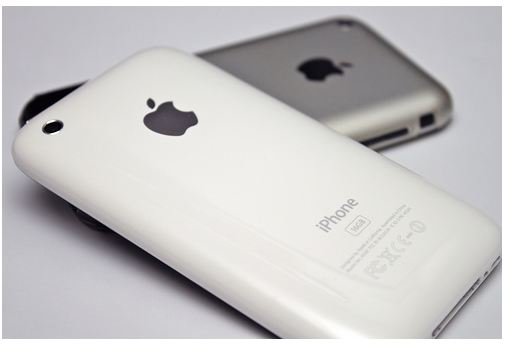What is 4G Mobile Technology? - The Preceding Generations and a Brief Look at 3G
Mobile Generations
The first wave of mobile phone technology was hardly mobile by today’s standards. Phones were so large that they were built into briefcase-like carriers for easy portability. Around the same time, car phones made their debut, so telecommunication networks were geared towards servicing both these devices. The networks were purely analogue, and were nowhere close to the kind of technology that is now visible. However, although the devices were extremely cumbersome, they heralded the age of the newer technology that is so prevalent today.
The second generation of mobile phone technology is still visible in mobiles now, because the second major innovation was the introduction of the Global System for Mobile Communications. Popularly known as GSM, this standards system allowed users to carry their mobiles across countries and still have network access. The second generation of mobiles were considerably smaller, as mobile circuitry became more sophisticated.
The 3G Revolution
Once mobiles became a practical necessity, and almost everyone had one, the next great innovation was turning a mobile phone into a miniature personal computer. GPRS (General Packet Radio Service) came about during the second generation, but the true proliferation of mobile Internet was brought on by EDGE (Enhanced Data Rates for GSM Evolution). The new advances sparked better connectivity, better download speeds and the overall improved availability of mobile data networks.
Each generation spanned a considerable number of years. There were a number of improvements and innovations that were introduced, however only the really major ones were marked with a change in generation. Most of the smaller ones received an acknowledgment by changing the decimal value of the generation.
What is 4G?
Mobile Internet still features as a major factor for innovation, as it still cannot hope to rival the PC-bound Internet experience. 4G is going to introduce wireless technologies to mainstream mobile phones.
Since 4G has not been officially defined by anyone, there is a lot of speculation as to what exactly will constitute 4G mobile technology. There are various contenders for the role; two of the frontrunners being WiMAX and LTE.
However, both the technologies have one common factor which seems to unanimously herald the onset of 4G: orthogonal frequency-division multiplexing or OFDM.
OFDM
Currently, there are a number of ways that data is transferred from device to device. CDMA (code division multiple access) is one popular technology, and TDMA (time division multiple access) is a second. CDMA transfers a number of different data packets on one channel, using codes to distinguish between different receivers. TDMA, on the other hand, again uses one channel but allots each different data packet a time slot.
OFDM differs from these technologies significantly; the channel itself is divided into narrow bands, and data packets are sent through each band individually. This method proves to be much more efficient than the previously used technologies, hence it is considered to be an integral part of the 4G revolution.
WiMAX
WiMAX, simply put, is broadband on a wireless connection. The existence of WiMAX will ensure that high-speed Internet access is available anywhere a user goes. The hardware is still in the design stages, because the adoption of this technology will entail a huge overhaul of existing telecommunication networks.
High-speed Internet access will drastically change a user’s mobile Internet experience. As it stands, the user is restricted to certain web interactions like uploading photos or videos, and maybe updating a blog once in a while. The data transfer rates prevalent are exorbitant and therefore data transfer is severely limited. The implementation of high-speed data access on mobile phones will finally catapult the mobile phone into serious contention in the personal computer segment.
LTE: Long-Term Evolution
Developed by the 3GPP (Third Generation Partnership Project) group, LTE is a new wireless broadband technology that differs from WiMAX. LTE places great emphasis on IP addresses, since it is closely based upon the TCP/IP networking skeleton. The idea is to create enough IP addresses so that each device has a unique one.
However the main focus of LTE is that it is shaping up to be high performance in every way. The technology isn’t fully developed as yet, but the characteristics that are emerging promise great things: high peak rates for data transmission, reduced latency and scalable bandwidth.
An important feature of LTE is the ability to co-exist harmoniously with previous architectures. Therefore a LTE-enabled network can pass data back and forth from a CDMA network seamlessly.
iPhone 4G
Hot on the heels of the iPad release, iPhone 4G handsets have been rumoured for release this summer. Every year, since the first iPhone handset was launched, there has been a new version of the phone released regularly. This year promises to be no different.
Speculation is rife that the 4G tacked on the end of the new iPhone means that the handset may just be 4G enabled. The argument posed here is that the 3G model was actually the second phone, so it is probably not a version number as previously thought.
Apple hasn’t confirmed or denied anything as yet; the new iPhone may not be 4G at all, but an HD (high definition) model. This scenario is certainly more credible as the improvements required for the iPhone to merit the 4G tag will be quite substantial.
4G is MAGIC
4G networks are still in the fluid stages of development. As of now, it is sometimes referred to as MAGIC (Mobile multimedia, Anytime/any-where, Global mobility support, Integrated wireless and Customized personal service) – which bodes well for a mobile phone user. It will be interesting to watch the technologies unfold over the course of the next few months.
